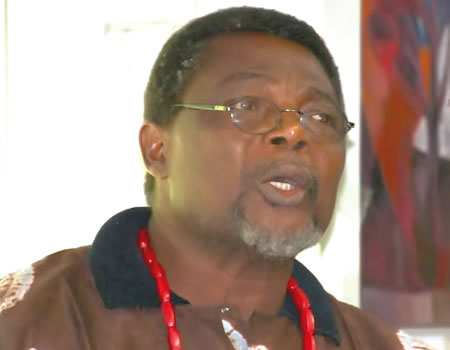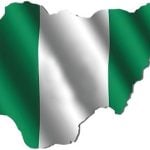YOU have been winning awards all over Europe and America; what do you think Westerners see in your works which Nigerian art lovers are not seeing?
Yes, I have received awards all over Europe and America; my paintings are abstract expressionistic with creative rendition of forms to preach not only African cultural ideas, beliefs and philosophies, but also to run social commentaries centred on unity, peace and love. However, of recent, I have been dwelling on racial unity and global peace. Hardwork, consistency and passion for professionalism, coupled with my artistic anticedence internationally, have been responsible for my recognition. However, locally, I have majorly received awards from my students for hardwork, punctuality, sincerity and intergrity. I also received the Justice of Peace (JP) of Oyo State in 2000 under the late Lam Adesina.
Can you be brief on some of the awards you have won?
I have won the Fellowship awards by the Virginia Centre for Creative Arts,USA and the Hambidge Centre for the Creative Arts and Science, USA. I also won the Michelangelo International award in Rome, Italy in 2015. There is also the Marco-Polo art award, which I got in Venice, Italy in 2015. The last is the Honorary Membership award of the International Academy of Visual Art, also in Italy, which I got last year.
With what criteria did you win your last award?
The award, Minerva (Goddess of Arts award) was given as a result of my artistic antecedents globally. Confirmation was sort out from the various art institutions I had performed and also the brilliant performances I have been putting up in any international show, made me win this award.
What is the significance of these awards to you as an artist?
I feel very proud receiving these awards as a contemporary African artist from Nigeria. As a cultural ambassador, its significance could be seen in the projection of our cultural heritage through my artistic statements globally, Art education in Africa has brought life to the doorsteps of the Western world. Whenever I am abroad, apart from exhibiting my culture through my dressing, I also represent my family, home-town, department, institution, state, country and the African continent. As a contemporary Nigerian artist, a legacy is been left behind for upcoming artists to emulate, a sort of inspiration for them.
Art in the Western world is very profitable, and most African artists are brought to limelight by Western sponsors, who promote their works globally. Contemporary art in Nigeria is still developing in terms of financial gains, as only few people patronise art. I want to give kudos to Yemisi Shyllon, who, as an art lover and collector, has invested so much in art through his collections and putting smile on faces of artists. I think there are other art lovers, collectors and patrons in Nigeria, but they need to follow the footsteps of Mr Shyllon by collecting and investing more in the arts.
Why is it that Nigerian artists are celebrated more abroad than in the country?
The art education level in Nigeria is not very encouraging simply because most individuals have no interest in art as an academic and professional discipline, and only few people take art seriously. The government is not equally paying much attention, as priority is given to other areas of the creative arts such as music, performance and even sports, unlike the West where art is taken seriously.
However, it is a good thing that Nigerian artists have been excelling all over the world, and this is due to the zealous creative spirits in us. We have succeeded in placing the country on the global map.
How did you develop your artistic style?
Neo-Oyekolaforms was provoked into existence while I was in attendance at a workshop in Egypt in 2006. A professor of art saw the great potential in my use and management of colours and forms, and suggested that I juxtaposed my use of colours, a painterly expression that belong to the West, with what he called authentic African forms from my roots. A couple of years later in the USA, I started this juxtaposition with abstract African forms which are a very well planned collection of patterns and motifs from Yoruba creative forms called Oju-ona.






